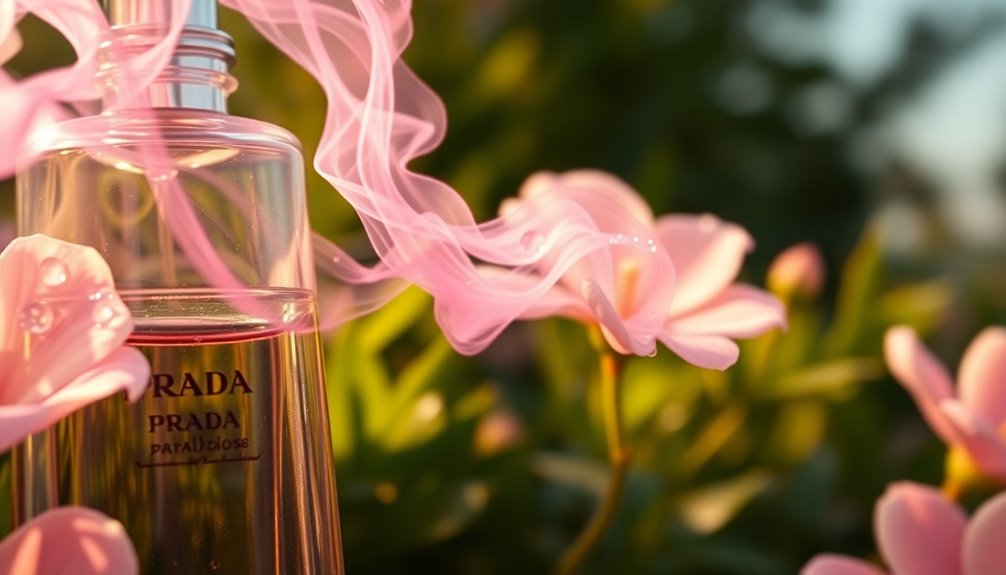Testosterone itself doesn't have a smell, but compounds like androstenone create a unique scent you might find interesting! This musky aroma can be sweet, floral, or even a bit foul, depending on who perceives it. Isn't that wild? About one-third of people can't even detect it at all! You often catch this scent in places like gyms or locker rooms, where it's amplified. Plus, different cultures and personal habits influence how we react to it. So, if you've noticed a certain smell around you, there's more to uncover about the fascinating world of scent and attraction!
Key Takeaways
- Testosterone itself is odorless, but its derivatives like androstenone and androstadienone produce musky and earthy scents.
- Androstenone's smell can vary significantly; some perceive it as sweet or floral, while others find it foul or urinous.
- Genetic variations in the OR7D4 receptor gene influence how individuals perceive testosterone-derived scents.
- Environments like gyms amplify the musk of these compounds, impacting social interactions and attraction.
- Cultural attitudes towards body odor affect perceptions of masculinity and desirability linked to testosterone scents.
Introduction
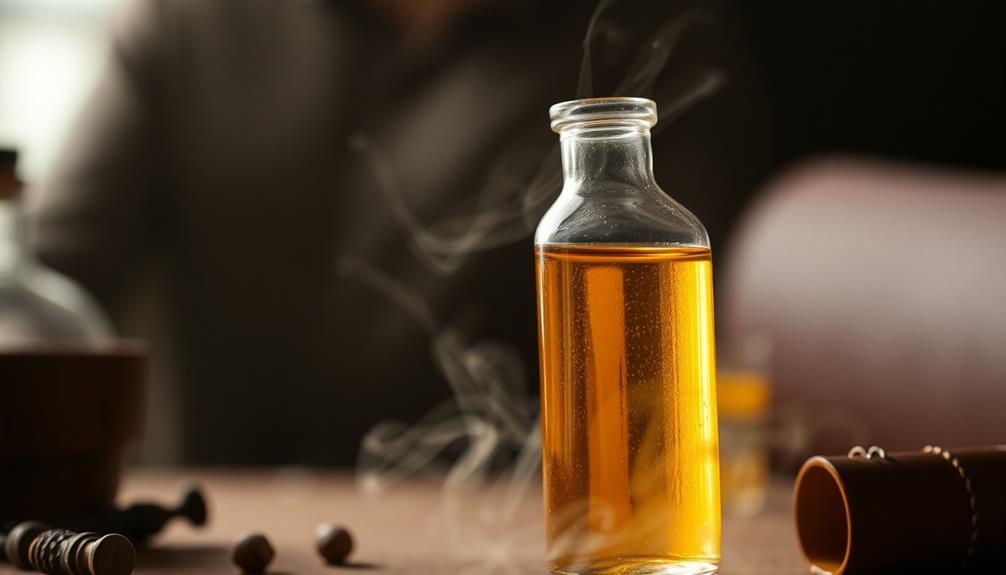
When it comes to understanding the scent of testosterone, it's crucial to note that the hormone itself doesn't have a smell. However, its derivatives, like androstenone, are what give male body odor its distinctive musky aroma.
You might be surprised to learn that not everyone perceives this scent the same way! Some people find androstenone sweet or floral, while others think it smells offensive or like urine. This difference in perception comes down to genetic variations in a specific receptor gene called OR7D4.
Additionally, just as emotional neglect can influence relationships, the scent of testosterone can impact social dynamics and interactions. When you think about it, the way you smell can influence how others perceive you.
Androstadienone, another derivative of testosterone, can even affect hormonal levels and mood in women. Isn't that fascinating?
Studies suggest that women may prefer the scents of men with higher testosterone levels, especially during their fertile phase. This shows how scent and attraction are closely linked.
Description of the Smell
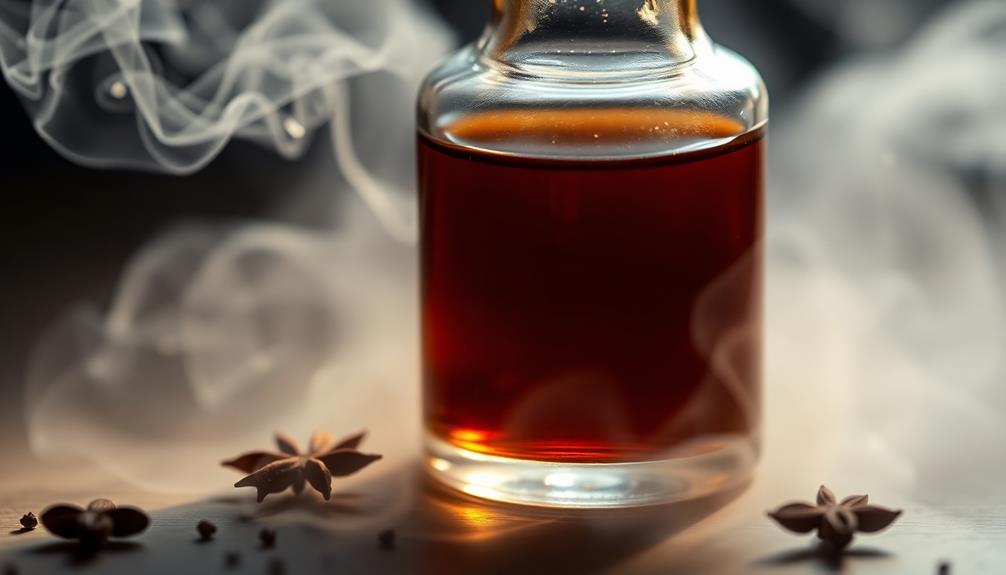
Often, people describe the smell associated with testosterone-derived compounds like androstadienone and androstenone as musky and earthy. This distinctive odor often comes from male sweat, creating an intriguing scent that can evoke strong feelings.
Androstenone's smell varies widely; some might think it's sweet or even floral, while others could find it foul or urinous. Isn't that fascinating?
Your perception of these smells plays a big role in how you experience them. About one-third of adults can't detect androstenone at all! So, if you can smell it, you're part of a unique group.
The scent of androstadienone has been shown to affect moods and even physical responses, like increased cortisol levels, which are linked to heightened sexual arousal.
This variability in odor perception isn't just about personal preference; it can influence social and sexual signaling too.
Source and Composition
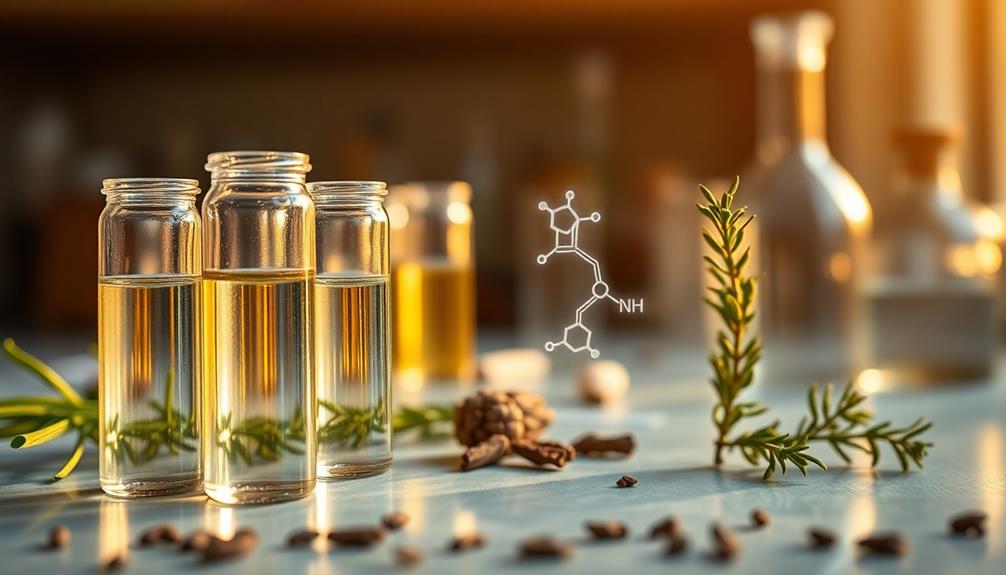
The source of the distinctive smell associated with testosterone lies in its derivatives, particularly androstenone and androstadienone. While testosterone itself is odorless, these compounds are found in human sweat and saliva, giving rise to that musky scent you might notice.
Understanding how narcissistic relationships can lead to emotional abuse can also illuminate why some individuals may be drawn to certain scents that evoke emotional responses. Androstenone, for instance, can smell sweet and floral to some, while others might find it foul or urinous. This variation in perception depends largely on your genetic makeup.
Androstadienone, another derivative, is primarily produced in male sweat, saliva, and semen, contributing its own unique musky odor. It's fascinating how genetic variations in your olfactory receptors can influence how you perceive these scents. One person might be drawn to the smell, feeling an attraction, while another might find it off-putting.
These testosterone-related compounds play a significant role in social and sexual signaling. They can impact attraction and mate selection, acting as olfactory cues.
Typical Scenarios or Environments

In environments like gyms or locker rooms, where physical activity heightens sweat production, you'll likely encounter the distinctive musk of testosterone derivatives. The scent comes from compounds like androstenone and androstadienone, which are found in male sweat.
These odors can significantly impact interpersonal dynamics, as relationship dynamics often shift in social settings like these. Depending on your genetic perception, these odors can smell musky or even sweet!
When you breathe in these scents, it can spark strong reactions. Studies show that women might find smells related to testosterone, especially during their peak fertility, to be attractive or arousing.
Imagine being in a crowded gym, the air filled with the scent of hard work and effort. You might notice how some people's body odor draws attention, evoking feelings of attraction in social settings.
Cultural and personal hygiene practices also play a role in how these scents are perceived. While some prefer fresh colognes, others appreciate natural body odors.
In each environment, your own reaction to these scents makes the experience unique. So, the next time you're at the gym or in a locker room, take a moment to notice the intriguing blend of odors that fill the air. You might just find it more interesting than you thought!
Emotional or Cultural Associations

While many mightn't realize it, the scent of testosterone can carry deep emotional and cultural significance. This musky body odor often sparks emotional responses, influencing how you perceive attractiveness and masculinity. Depending on where you're in the world, cultural attitudes toward body odor can greatly vary. Some cultures embrace it, while others see it as something to avoid.
Interestingly, studies show that women may find the scent of testosterone-derived compounds, like androstenone, particularly attractive during peak fertility. This reaction connects emotional responses to biological signals, making the scent even more fascinating. Think about how powerful smells can bring back memories; the scent of testosterone can evoke strong feelings and associations, enhancing attraction between people.
Moreover, marketing often plays with these ideas, linking musk and masculinity to desirability. You might notice fragrances that highlight these characteristics, shaping how society views personal identity.
Health or Safety Considerations
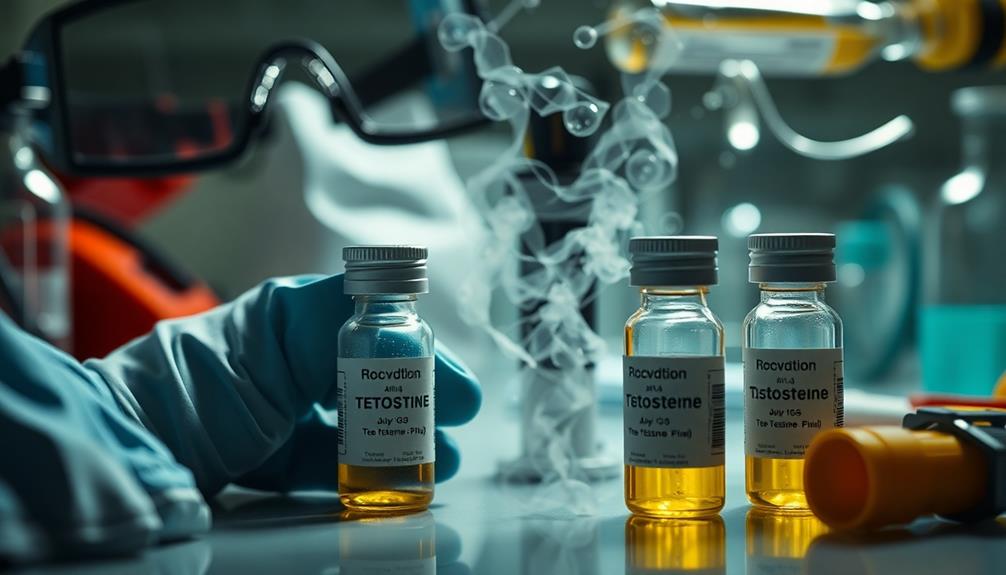
Understanding the emotional and cultural significance of testosterone's scent naturally leads to health and safety considerations surrounding its derivatives.
While testosterone itself is odorless, its derivatives, like androstadienone, have a musky odor that can affect how we feel and react to others. This scent can even influence attraction and social interactions, making it fascinating!
However, exposure to androstadienone can raise cortisol levels, which might impact your mood and stress. This is especially true for women, so being aware of how these odors affect you is important for your health.
Also, did you know that some people have genetic variations in their olfactory receptors? If you have a nonfunctional OR7D4 gene, you mightn't be able to smell androstadienone at all!
This can change how you perceive body odor and affect your social dynamics.
Final Thoughts

The complex interplay between testosterone's scent and our perceptions offers intriguing insights into human behavior and attraction. While testosterone itself is odorless, its derivatives, like androstenone and androstadienone, can create a range of scents that might smell sweet, floral, or even foul. This variety depends on your genetic perception. Isn't that fascinating?
Not everyone can detect these scents, thanks to differences in the OR7D4 odorant receptor gene. This means that while one person might find a scent appealing, another mightn't smell it at all!
Studies reveal that androstadienone can even elevate cortisol levels in women, linking body odor to emotional and physical responses.
These scents play a vital role in attraction, shaping how we interact socially. Cultural and personal preferences about body odor also influence how we perceive masculinity, making the aroma of testosterone-related compounds a key factor in attraction.
Frequently Asked Questions
Does Testosterone Have a Scent?
Testosterone itself doesn't have a scent. However, when it's metabolized, it produces compounds like androstenone that can emit various aromas. Your perception of these scents might differ based on genetic factors and individual sensitivities.
What Does Testosterone Steroid Smell Like?
When you think about testosterone steroids, note that they're typically odorless. However, their derivatives like androstenone can smell sweet or foul, depending on your genetics and how your body processes these compounds.
What Do Male Pheromones Smell Like?
When you're exposed to male pheromones, you might perceive varying scents. Some find them sweet or floral, while others detect unpleasant odors. Your unique genetics influence how you interpret these complex olfactory signals.
Does Testosterone Smell Like Vanilla?
You might think testosterone smells like vanilla, but that's not universally true. Its derivative, androstenone, can smell sweet to some, while others find it unpleasant. It all depends on your unique genetic makeup and perception.




